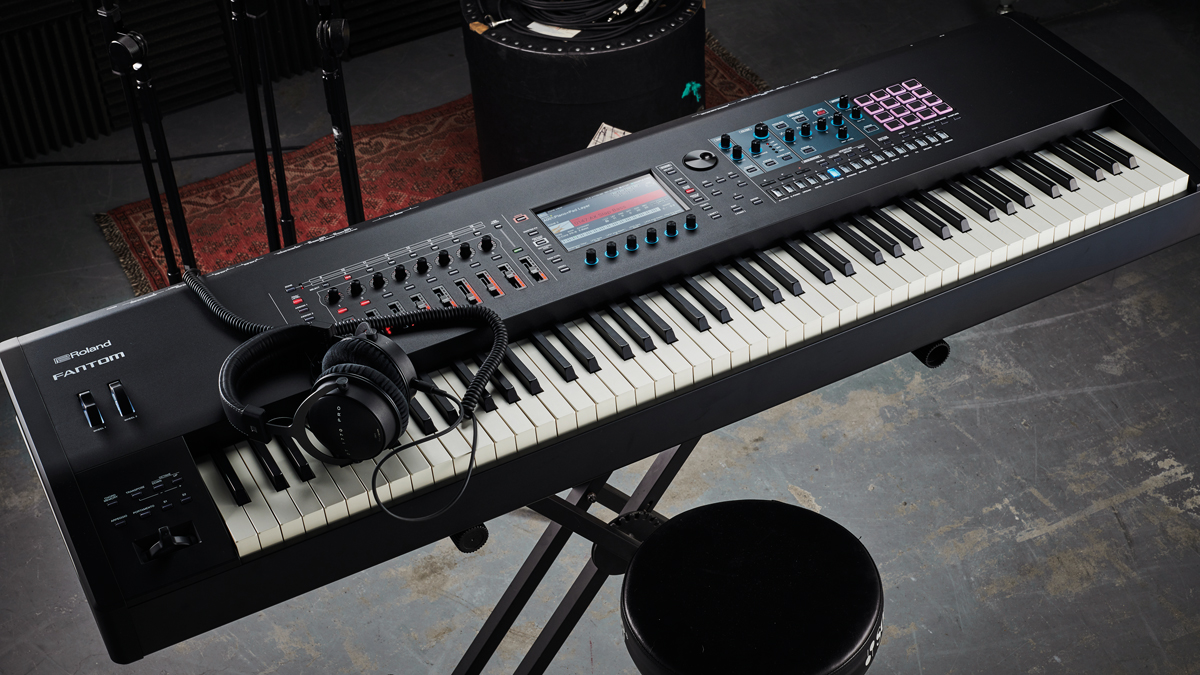MusicRadar Verdict
A versatile powerhouse with bags of connectivity. We’re looking forward to seeing how the Fantom ‘platform’ expands in the future.
Pros
- +
Well-built with a clear, snappy touchscreen
- +
Powerful step LFOs, multimode analogue filter/drive and great sequencing, sampling and effects
- +
Streams multiple audio channels over USB, CV/gate outs
Cons
- -
Expensive
- -
No dedicated tonewheel organ/EP engines
- -
Not enough ‘bread and butter’ scenes. No full ‘linear’ audio track recording or user multisampling (currently). Piano-roll editing is quite basic (currently)
- -
No rack version; bulky at 27kg
MusicRadar's got your back
What is it?
The latest version of Roland’s Fantom synth workstation has a brand-new, more direct interface, new sound engines and lots of connectivity/integration to bring things up-to-date. We’re looking at the 88-note Fantom-8 here, but you can also buy the Fantom-7 and Fantom-6, which have 76 and 61 keys respectively.
The new Fantom ‘platform’ uses Roland’s latest Zen-Core tech (basically a powerful new unified engine that contains PCM, V-Piano modelling and VA waves, in this instance), with processing headroom for future engine upgrades and additions.
The way the Fantom operates now revolves around ‘Scenes’. A Scene is much like the old Live Set (256 are available, more would be nice!) and is basically a container or snapshot of everything on the front panel.
One Scene can be made up of up to 16 Zones (each Zone contains controller and MIDI info, plus key ranges for controlling the native engines and external MIDI gear). Each Zone then contains a Tone (a Tone can contain up to four partials/oscillators). Each partial (oscillator) within a Tone can contain a completely different sound engine, including the modelled V-Piano engine, PCM (samples), VA modelling (up to nine wave types including Juno, SuperSaw, PCM-Sync or Noise). So there’s a lot on offer.
PCM banks A and B contain 963 and 257 samples respectively, giving a total of 1,220 raw partial waves to build on across the four partials available within a Tone. To bring things further up-to-date, you’ll also find new Tones from the AX-Edge keytar, alongside classics from the Integra-7 and XV-5080, though there are none of the lovely Supernatural Acoustic Tones onboard (yet).
Regarding hands-on control, there’s the standard issue Roland mod/bender, several assignable switches, two wheels (like the JD-XA) plus eight faders with LED level and LED ring dials for each of the 16 Zones (8 x 2 banks), plus one fader for USB audio streaming level from your DAW.
There are six high-resolution clickable knobs for editing under the screen (linked to six key performance parameters). Then you also get direct oscillator, filter, envelope and effect controls right on the front panel, which take you directly to the main areas of a sound you’d most likely want to edit on the fly. Roland has done a great job keeping things simple but effective, especially considering the power under the hood.
Want all the hottest music and gear news, reviews, deals, features and more, direct to your inbox? Sign up here.
In addition, there are 16 TR8-style step buttons for step-sequencing, which also take you directly to 16 instrument categories (to speed up editing and performing) and a rhythm track which allows you to chain drum patterns/sync them to the sequencer and then easily switch between each section/pattern onscreen. Finally, you have 16 pads (four banks) and these can be used for triggering notes, samples, audio, MIDI (internal/external), sequences and more besides.
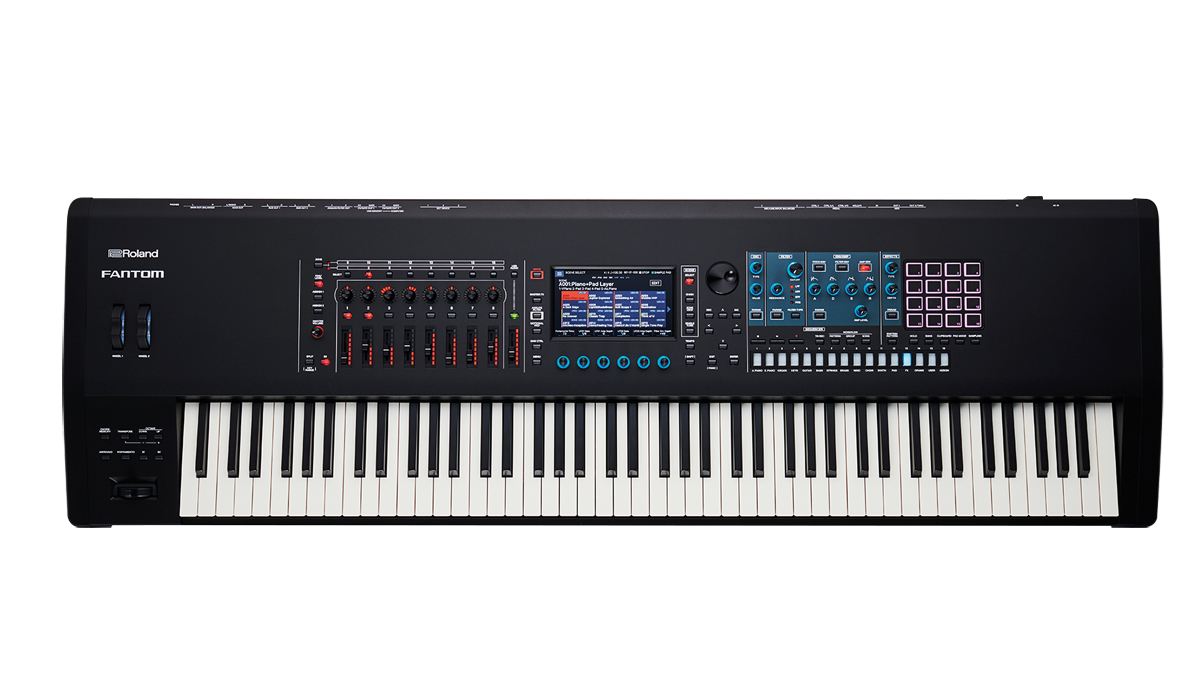

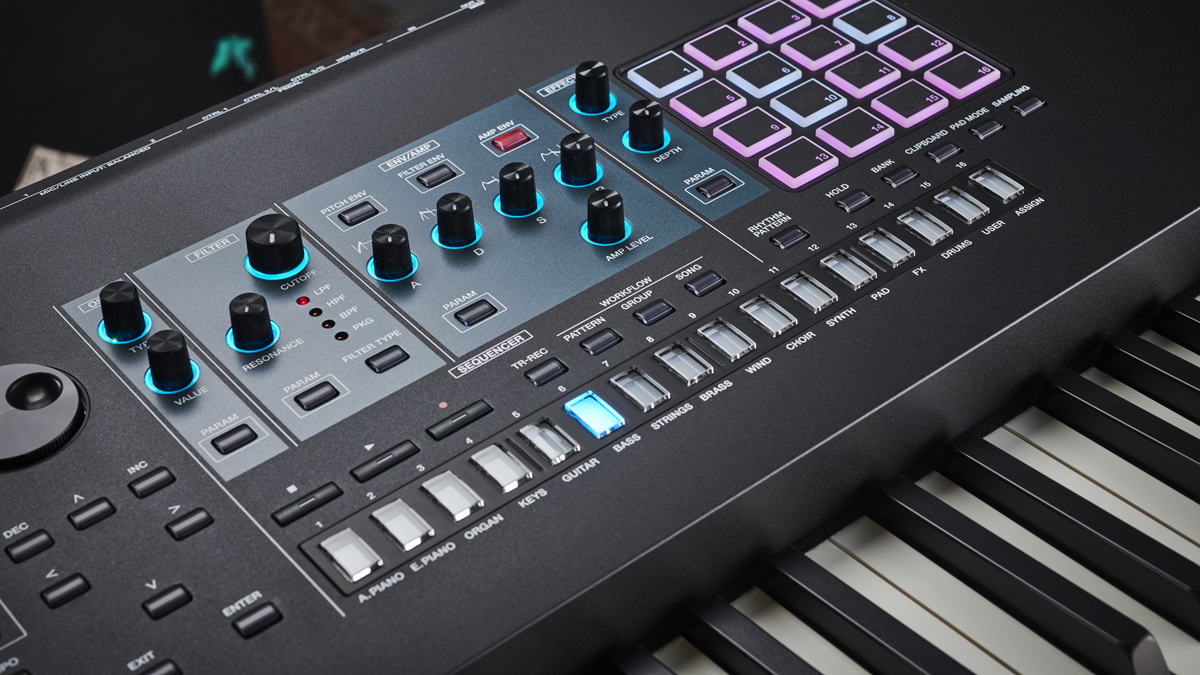
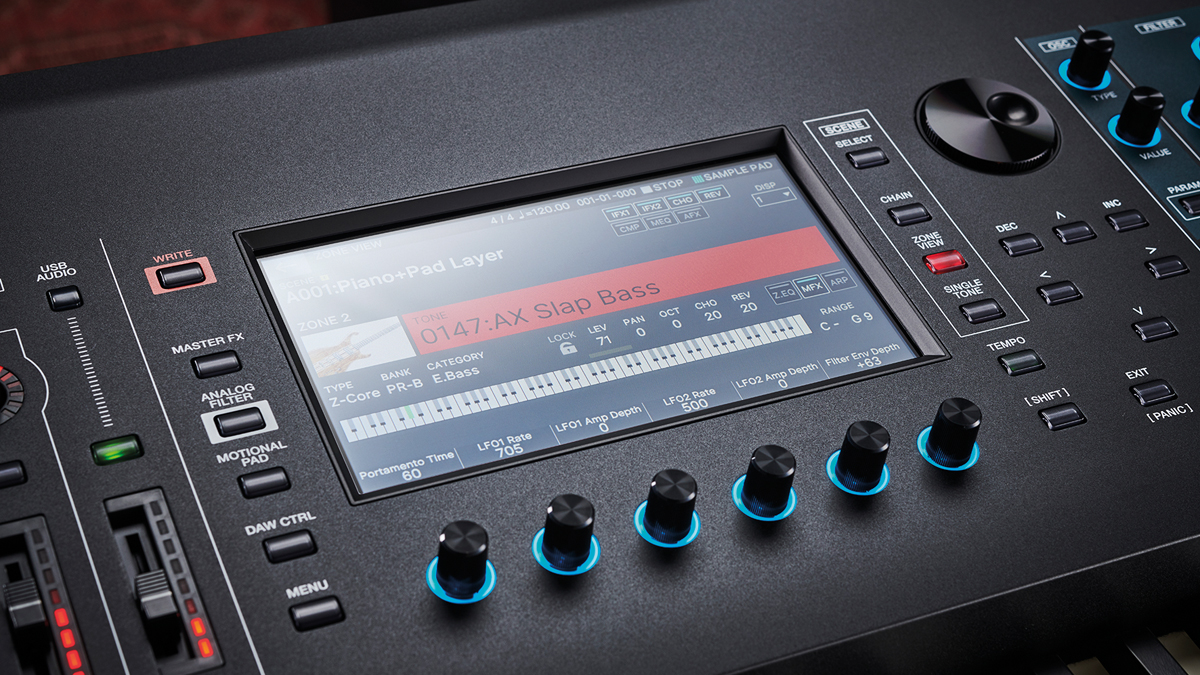
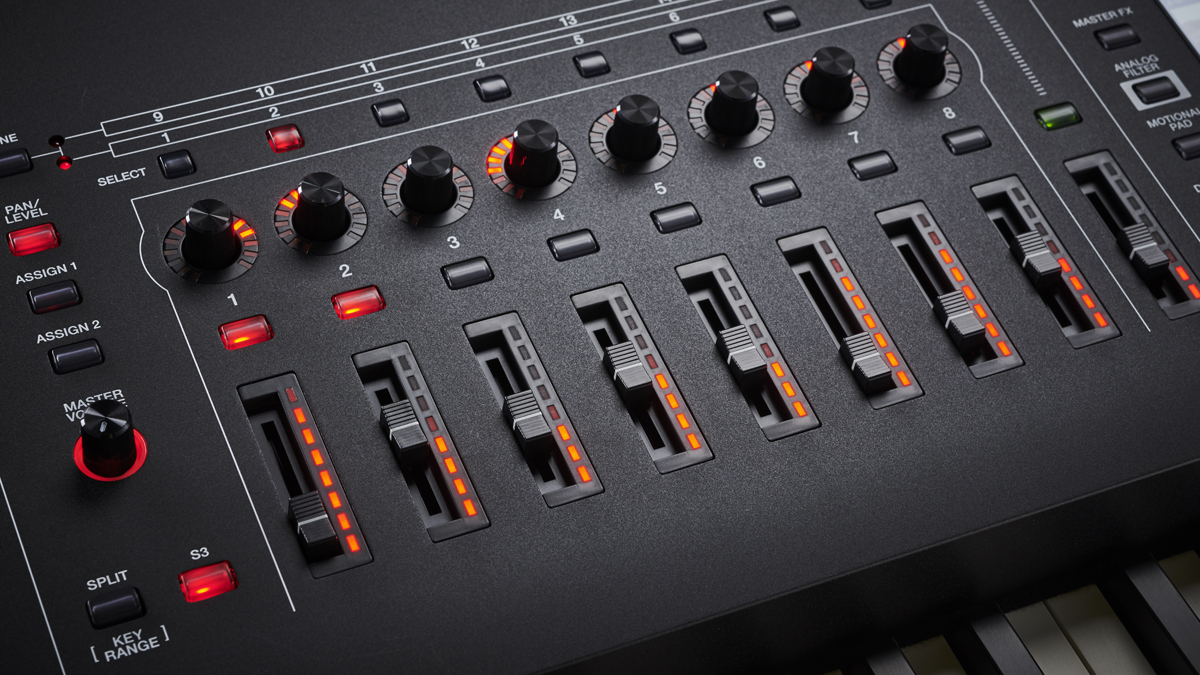
Performance and verdict
The Fantom-8 has a high-quality, great-feeling wooden PHA-50 keybed (like the RD-2000) but with aftertouch. All the new Fantoms feel and look the part and are built solidly throughout, with a metal front panel and under-key lip, plastic for the rear, sides and controllers panel and what appears to be a particle board base.
Switches feel positive, knobs and dials are smooth and high resolution, panel lighting is great for navigating and viewing stored values of knobs, and the new large colour touchscreen is the snappiest I’ve used in a workstation.
In fact, Roland has come up with the most intuitive workstation UI/UX design we’ve laid hands on to date; you can get at everything directly from the front panel yet, even when you dig deep, the Fantom never gets overwhelming (as the Yamaha Montage/Kronos can at times), plus all the lettering onscreen is of a size that can actually be read comfortably!
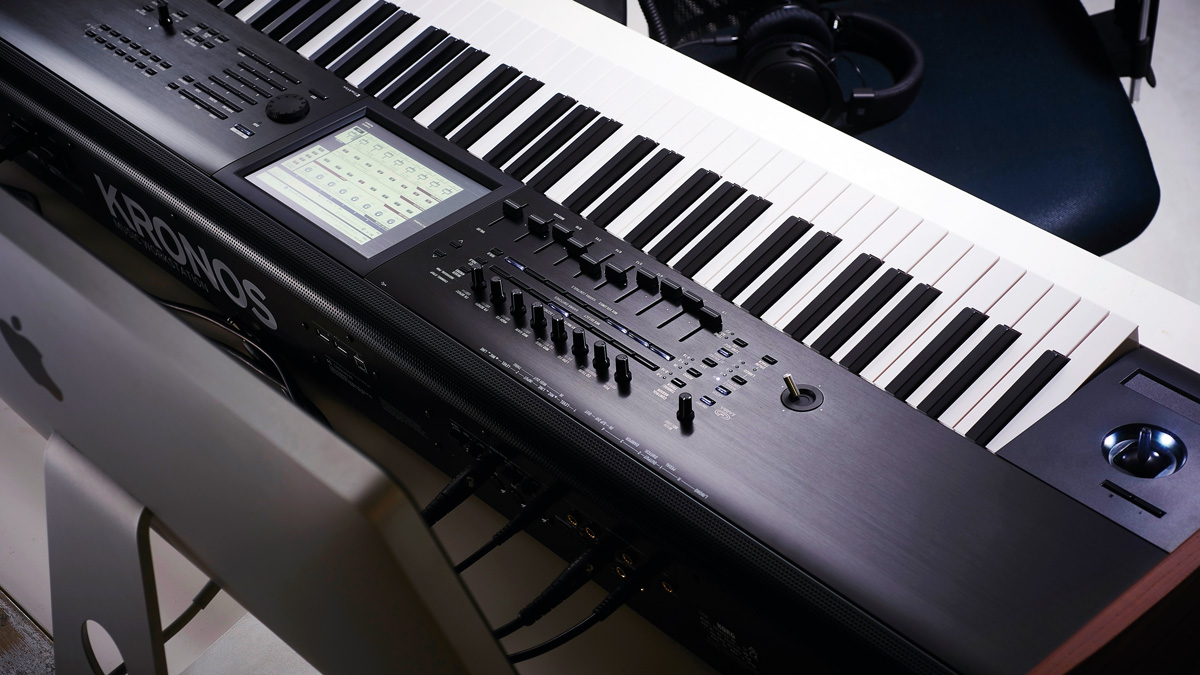
• Korg Kronos 88
• Yamaha Montage 8
• Nord Stage 3 88
The new Fantom has a wide, warm, precise sound (with a tilt to the brighter/high-mid character) but with a punchy low end. With all the engines, deep-step LFOs and comprehensive modulation facilities, control matrix, Structures, VA filters and dual-IFX per-Zone (plus chorus and reverb), it feels engaging.
The stereo multimode analogue filter/drive (a workstation first) adds welcome character, and the V-synth-style Motional Pad (on screen) morphs seamlessly between four sounds.
Downsides? Well, the Fantom would benefit from a dedicated V-Electric Piano engine with the same detailed control and full polyphony/note tuning as the excellent V-Piano engine. It also misses a dedicated VK-tonewheel organ engine (and those Zone faders are crying to be auto-mapped drawbars)!
Full ACB analogue-modelling engines (as in the System-8/Cloud) would also be welcome inclusions, along with linear audio tracks/user multisampling, and currently, Scene saving wasn’t saving all our tweaks.
However, these are early days for the new Fantom platform; Roland has laid the solid groundwork, which we’re sure will be expanded and improved soon. A solid return indeed!
MusicRadar verdict: A versatile powerhouse with bags of connectivity. We’re looking forward to seeing how the Fantom ‘platform’ expands in the future.
The web says
"This is the workstation that the keyboard world needed. With so many people going the MIDI controller route, this is a breath of fresh air for the community." Keyboard Kraze
Hands-on demos
Guitar Center
Sweetwater
GAK
Andertons
Specifications
- Keyboard: 88 Keys (PHA-50 Wood and Plastic Hybrid Structure, with Escapement and Ebony/Ivory Feel, channel aftertouch)
- Sound Generator: ZEN-Core, V-Piano Technology
- Parts: 16 Zones (Internal + External)
- Scenes: 128 Scenes x 4 Bank
- Tones: Over 3,500 Tones, over 90 Drum kits
- Multi-Effects: 16 systems, 90 types
- Part EQ: 16 systems
- Drum Part COMP: 6 systems
- Insertion Effect: 2 System, 90 Types
- Chorus: 8 types
- Reverb: 6 types
- Master Compressor
- Master EQ
- Mic Input Reverb: 6 types
- Analog Filter STEREO; Type: LPF1/LPF2/LPF3/HPF/BPF/Bypass, Drive, Amp
Sequencer
- MIDI Tracks: 16 (Internal/External)
- Group: 16
- Pattern: 8 (per each Track)
- Pattern Length 32 measures
- Recording Method: Realtime recording, Step recording, TR-REC
Sampler
- Format: 16-bit linear, 44.1/48kHz, WAV/AIFF import supported
- Maximum Polyphony: 8
- Number of samples: 16 Pads x 4 Banks
Other
- Rhythm Pattern, Arpeggiator, Chord Memory
- Controllers: Pitch Bend/Modulation Lever, Assignable Switch x 2 (S1/S2), Control Knob x 8, Slider x 8, USB Audio Slider, Wheel x 2, Function Knob x 6, Sound Modified Knob x 11, 4 x 4 Pad
- Display: Graphic Type, 7", Wide VGA (800 x 480 dots), backlit LCD (Color/Touch screen)
- Connectors: Headphones Jack: Stereo 1/4-inch phone type; MAIN OUT Jacks (L/MONO, R) (1/4-inch phone type); MAIN OUT Jacks (L, R) (XLR type); SUB OUT1 Jacks (L, R) (1/4-inch phone type); SUB OUT2 Jacks (L, R) (1/4-inch phone type); ANALOG OUTPUT Jacks(1,2)(1/4-inch phone type); Mic/Line Input Jacks: (1,2) (1/4 inch phone type/XLR type); 2 x CV OUT, 2x GATE OUT; FOOT PEDAL Jacks (HOLD, CTRL1,CTRL2,CTRL3); MIDI connectors (IN, OUT1, OUT2/THRU); USB MEMORY Port; USB COMPUTER Port (AUDIO/MIDI); 3 x External Device Port
- Width: 1,432 mm
- Depth: 439 mm
- Height: 153 mm
- Weigh 27.7 kg6
MusicRadar is the number one website for music-makers of all kinds, be they guitarists, drummers, keyboard players, DJs or producers...
- GEAR: We help musicians find the best gear with top-ranking gear round-ups and high-quality, authoritative reviews by a wide team of highly experienced experts.
- TIPS: We also provide tuition, from bite-sized tips to advanced work-outs and guidance from recognised musicians and stars.
- STARS: We talk to musicians and stars about their creative processes, and the nuts and bolts of their gear and technique. We give fans an insight into the craft of music-making that no other music website can.
